elemintalshop
Viking Kiev Founding Family Riverboat Monument & Saint Sophia Cathedral 5000 Karbovantsiv Ukraine Authentic Banknote Money for Collage Craft
Viking Kiev Founding Family Riverboat Monument & Saint Sophia Cathedral 5000 Karbovantsiv Ukraine Authentic Banknote Money for Collage Craft
Couldn't load pickup availability
Viking Family Riverboat Monument & Saint Sophia Cathedral 5000 Karbovantsiv Ukraine Authentic Banknote Money for Jewelry and Collage (Kyiv) (Kiev Founders) (Hovering Swan) (Ladya Monument)
Obverse: Ladya ("Riverboat") Monument (also known as the "Hovering Swan" monument) honoring the city of Kiev's founding Viking brothers Kyi, Shchek and Khoryv with their sister Lybid.
All notes with serial number. Trident "Tryzub" shield added at left.
(Ukrainian brides come to the Ladya Monument on their wedding day and throw bouquets over their heads in the direction of the boat, while standing with their backs to it. The idea is to have the bouquet land inside of the boat, as a sign of a family's future happiness. Also, near the Ladya Monument grows a “marriage” tree upon which the brides tie ribbons for a happy life and beautiful and healthy children.)
Lettering: УКРАЇНА
КУПОН
5000
УКРАЇНСЬКИХ КАРБОВАНЦІВ
НАЦІОНАЛЬНИЙ БАНК УКРАЇНИ
Translation: UKRAINE
COUPON
5000
UKRAINIAN KARBOVANTSIV
NATIONAL BANK OF UKRAINE
Reverse: Cathedral of St Sophia in Kyiv at the left-center. Trident Tryzub shield added at right.
Features
Issuer Ukraine
Period Republic (1991-date)
Type Standard banknote
Years 1993-1995
Value 5,000 Karbovantsiv (5000 UAK)
Currency Karbovanets (1992-1996)
Composition Paper
Size 105 × 53 mm
Shape Rectangular
Demonetized 17 September 1996
Number N# 203451
References P# 93
Ladya Monument of Kiev founders.
In keeping with its name, the Ladya (Boat) Monument features an ancient riverboat with the figures of three brothers - Kyi, Schek and Khoryv - and their sister Lybid, who are believed to be the founders of the city of Kiev. According to a legend, each of the four siblings had their own settlements, which eventually merged into one, named after the oldest of the brothers, Kyi.
Located on the banks of the river Dnieper, near the Dnipro metro station, the monument was inaugurated on the 1500th anniversary of the Ukrainian capital, in 1981.
The sculptural composition, officially known as the “Hovering Swan”, was created by Vasiliy Boroday and Nicolay Feshenko, and was made entirely of hammered cooper. The composition appears as if emerging from a granite pool, which creates an illusion of a boat sliding over a calm sea.
Aside from its historical importance, the monument also has a romantic meaning. Ukrainian brides come here on their wedding day and throw bouquets over their heads in the direction of the boat, while standing with their backs to it. The idea is to have the bouquet land inside of the boat, as a sign of a family's future happiness. Also, near the Ladya grows a “marriage” tree upon which the brides tie ribbons for a happy life and beautiful and healthy children.
Source: https://www.gpsmycity.com/attractions/monument-of-kiev-founders---ladya-29877.html
*******
Wikipedia:
Kyi, Shchek and Khoryv were three legendary brothers—often mentioned along with their sister Lybid —who, according to the Primary Chronicle, founded the medieval city of Kyiv, which eventually became the capital of present-day Ukraine. There is no precise and historically established information about the rule of Kyi and the establishment of the city of Kyiv.
Historical background
In the Primary Chronicle which is traditionally believed to have been written by a monk of Kyiv Cave Monastery by the name of Nestor and finished in 1113, a special place is held by the legend about the foundation of Kyiv by three brothers. In the legend, Nestor places those brothers onto various hills of Kyiv. Geographically, the old Kyiv is located on a higher right bank of Dnieper which is an extension of the Dnieper Upland where remnants of the Church of the Tithes are located.
The Chronicle further states that there were people ("who did not know what were saying") who considered Kyi a mere ferryman. But, then it argues that Kyi as a prince of his people was visiting Czargrad and received great honors from the Emperor. Dmitry Likhachov combined attestations of the Nikon Chronicle which also indicates that Kyi with a great army marched onto Czargrad and received great honors from the Emperor. During his expedition to Constantinople, Kyi also found a city of Kyivets on the Danube.
Nestor also names the approximate date of the assault on Kyiv by the Khazar Empire as "after the death of Kyi" which confirms the hypothesis of Boris Rybakov, 6th-7th centuries. In his chronicle Nestor does not indicate the date of Kyi's death nor the existence or absence of his heirs who continued to rule after his death. The chronicle does mention a meeting between local residents with the arrived Askold and Dir who asked them referring to Kyiv, whose city it was and received the answer that the three brothers who built it were long dead and the residents now paid tribute to the Khazars. However, the Polish historian Jan Długosz drew attention to the Przemysł Chronicle that asserts "after the death of Kyi, Shchek, and Khoryv their children and grandchildren who descended from them by direct lineage ruled for many years".
Modern tributes
In 1982, Kyi, Shchek, Khoryv and Lybid were depicted (standing on an ancient riverboat) in a sculpture at the river-side of Navodnytsky Park. The monument, created by Vasiliy Borodai, soon became iconic for the city and has been used as Kyiv's unofficial emblem.
******
Wikipedia:
Saint Sophia Cathedral in Kyiv, Ukraine, is an architectural monument of Kyivan Rus. The cathedral is one of the city's best known landmarks and the first heritage site in Ukraine to be inscribed on the World Heritage List along with the Kyiv Cave Monastery complex. Aside from its main building, the cathedral includes an ensemble of supporting structures such as a bell tower and the House of Metropolitan.
The complex of the cathedral is the main component and museum of the National Sanctuary "Sophia of Kyiv" which is the state institution responsible for the preservation of the cathedral complex as well as four other historic landmarks across the nation.
History
The cathedral is named after the 6th-century Hagia Sophia (Holy Wisdom) cathedral in Constantinople (present-day Istanbul), which was dedicated to the Holy Wisdom rather than to a specific saint named Sophia. The first foundations were laid in 1037 or 1011, but the cathedral took two decades to complete. According to one theory, Yaroslav the Wise sponsored the construction of the Saint Sophia Cathedral in 1037 to celebrate his decisive victory over the nomadic Pechenegs in 1036 (who thereafter were never a threat to Kiev). According to Dr. Nadia Nikitenko, a historian who has studied the cathedral for 30 years, the cathedral was founded in 1011, under the reign of Yaroslav's father, Grand Prince of Kievan Rus, Vladimir the Great. This has been accepted by both UNESCO and Ukraine, which officially celebrated the 1000th anniversary of the cathedral during 2011. The structure has 5 naves, 5 apses, and (quite surprisingly for Byzantine architecture) 13 cupolas. It is surrounded by two-tier galleries from three sides. Measuring 37 to 55 m (121 to 180 ft), the exterior used to be faced with plinths. On the inside, it retains mosaics and frescos from the 11th century, including a dilapidated representation of Yaroslav's family, and the Orans.
Originally the cathedral was a burial place of the Kievan rulers including Vladimir Monomakh, Vsevolod Yaroslavich and the cathedral's founder Yaroslav I the Wise, although only the latter's grave survived to this day (see picture).
After the pillaging of Kiev by Andrei Bogolyubsky of Vladimir-Suzdal in 1169, followed by Mongol invasion of Rus' in 1240, the cathedral fell into disrepair. It was also greatly damaged in the 16th century when the Polish–Lithuanian Commonwealth was trying to unite Catholic and Orthodox churches. At this period the cathedral was almost ruined: its roof decayed and a lot of wall paintings had gone. Following the 1595-96 Union of Brest, the Cathedral of Holy Sophia belonged to the Ukrainian Greek Catholic Church until it was claimed by the Moldavian Orthodox metropolitan Peter Mogila (Mohyla) in 1633. Mogila commissioned the repair work and the upper part of the building was thoroughly rebuilt, modeled by the Italian architect Octaviano Mancini in the distinct Ukrainian Baroque style, while preserving the Byzantine interior, keeping its splendor intact. The work continued under the Cossack Hetman Ivan Mazepa until 1767. During this period around Holy Sophia Cathedral a bell tower, a monastery canteen, a bakery, a "House of Metropolitan", the western gates (Zborovski gates), a Monastic Inn, a Brotherhood campus and a bursa (seminary) were all erected. All of these buildings, as well as the cathedral after the reconstruction, have distinctive features of Ukrainian Baroque.
After the Russian Revolution of 1917 and during the Soviet anti-religious campaign of the 1920s, the government plan called for the cathedral's destruction and transformation of the grounds into a park "Heroes of Perekop" (after a Red Army victory in the Russian Civil War in Crimea). The cathedral was saved from destruction (the opposite St. Michael's Golden-Domed Monastery was destroyed in 1935) primarily with the effort of many scientists and historians. Nevertheless, in 1934, Soviet authorities confiscated the structure from the church, including the surrounding 17th–18th-century architectural complex and designated it as an architectural and historical museum.
Since the late 1980s Soviet, and later Ukrainian, politicians promised to return the building to the Orthodox Church. Due to various schisms, and factions within the Church the return was postponed as all Orthodox and the Greek-Catholic Churches lay claim to it. Although all of the Orthodox churches have been allowed to conduct services at different dates, at other times they are denied access. A severe incident was the funeral of Patriarch Volodymyr of the Ukrainian Orthodox Church – Kyiv Patriarchate in 1995 when riot police were forced to prevent the burial on the premises of the museum and a bloody clash took place. After events such as those no religious body has yet been given the rights for regular services. The complex now remains a secular museum of Ukraine's Christianity, with most of its visitors being tourists.
On 21 August 2007, the Holy Sophia Cathedral was named one of the Seven Wonders of Ukraine, based on votes by experts and the internet community.
******
Wikipedia:
The modern "trident" symbol was adopted as the coat of arms of the Ukrainian People's Republic in February 1918. The design has precedents in seals of the Kievan Rus'. The first known archeological and historical evidence of this symbol can be found on the seals of the Rurik dynasty. However, according to Pritsak, the stylized trident tamga, or seal which was used by Rus' rulers such as Sviatoslav I of Kiev and similar tamgas that were found in ruins are Khazar in origin. It was stamped on the gold and silver coins issued by Prince Volodymyr the Great (980–1015), who might have inherited the symbol from his ancestors (such as Svyatoslav I Igorevich) as a dynastic coat of arms, and he passed it on to his sons, Svyatopolk I (1015–19) and Yaroslav the Wise (1019–54). The symbol was also found on the bricks of the Church of the Tithes in Kyiv, the tiles of the Dormition Cathedral in Volodymyr-Volynskyi, and the stones of other churches, castles, and palaces. There are many examples of it used on ceramics, weapons, rings, medallions, seals, and manuscripts.
Most historians agree that the medieval symbol was not intended as depicting a trident, but rather, was a symbol of the Holy Trinity; it also was most likely a stylized falcon. Depictions of a flying falcon with a Christian cross above its head have been found in Old Ladoga, the first seat of the Kievan Rurik dynasty, of Scandinavian lineage. Such a falcon, along with a cross are also featured on the coins of Olaf Guthfrithsson, a Viking king of Dublin and Northumbria. Falconry for centuries has been a royal sport in Europe. The gyrfalcon (known also as Norwegian falcon) was considered a royal bird and is mentioned (ukr.: рарог) in one of the earliest epics of Ruthenia, the 12th century poem The Tale of Ihor's Campaign.
A three-fingered hand salute is sometimes used to mimic the Tryzub; as for example in pro-independence demonstrations in the late 1980s and in the logo of the (Ukrainian) Svoboda party.
Share
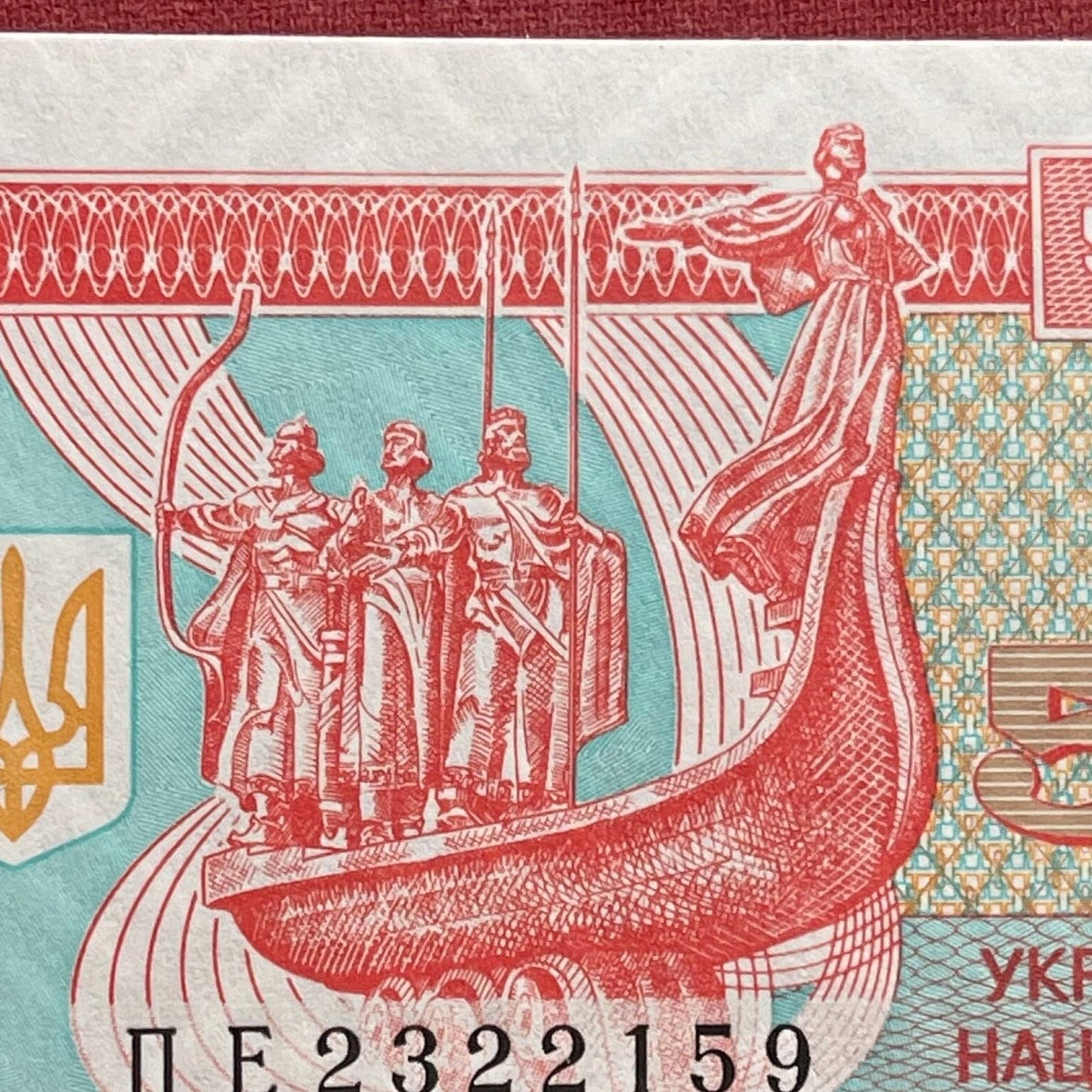
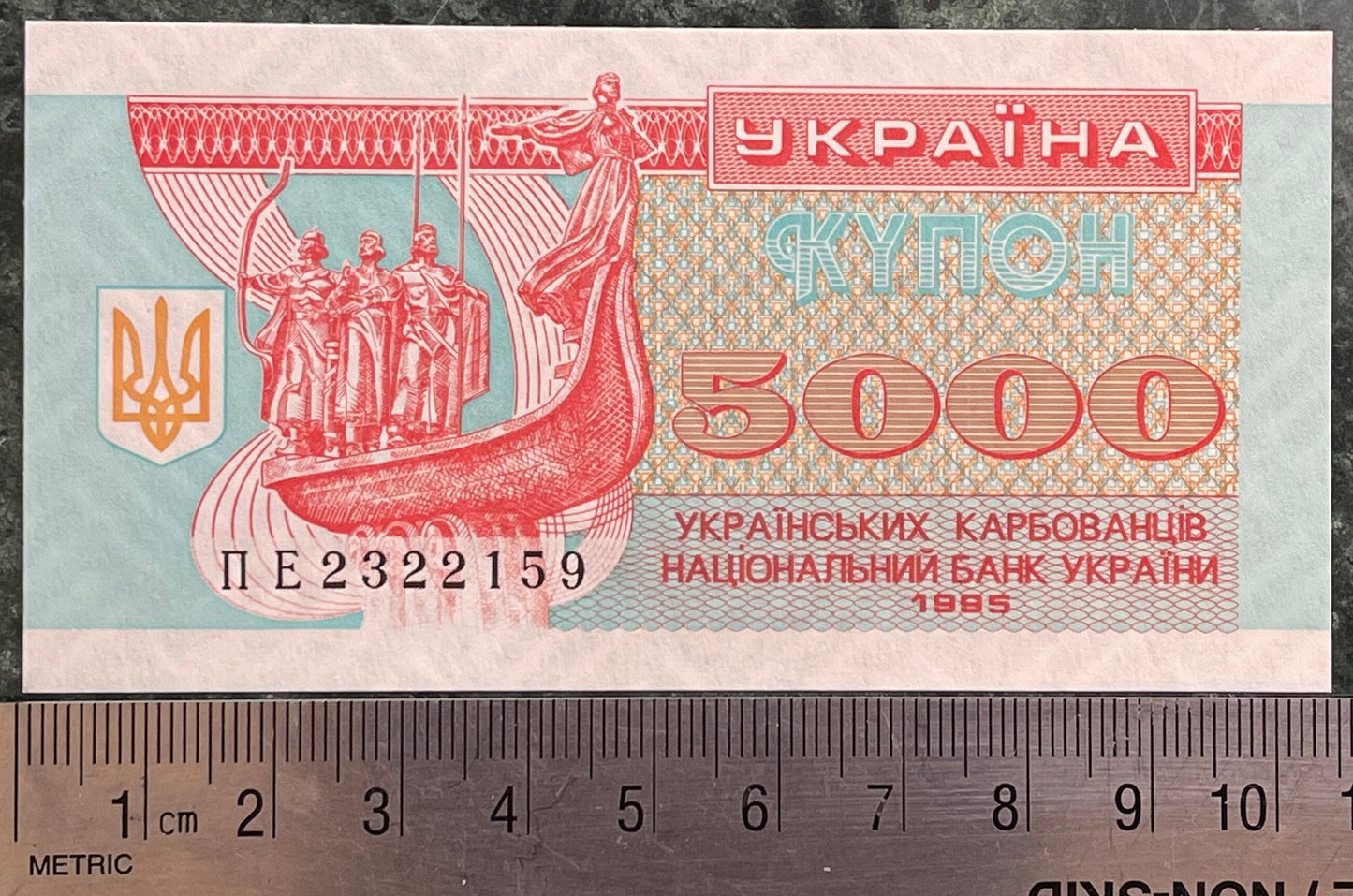
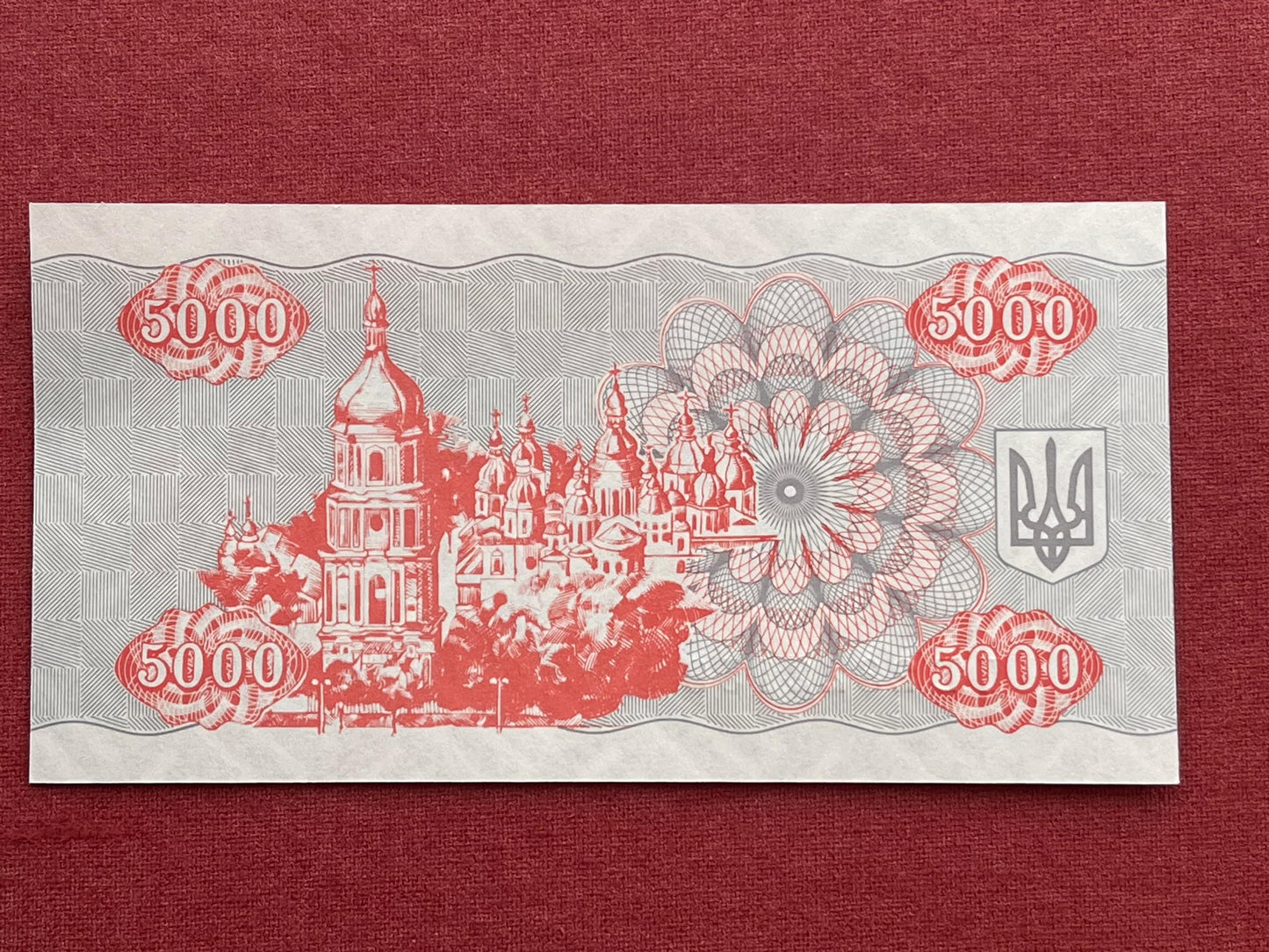
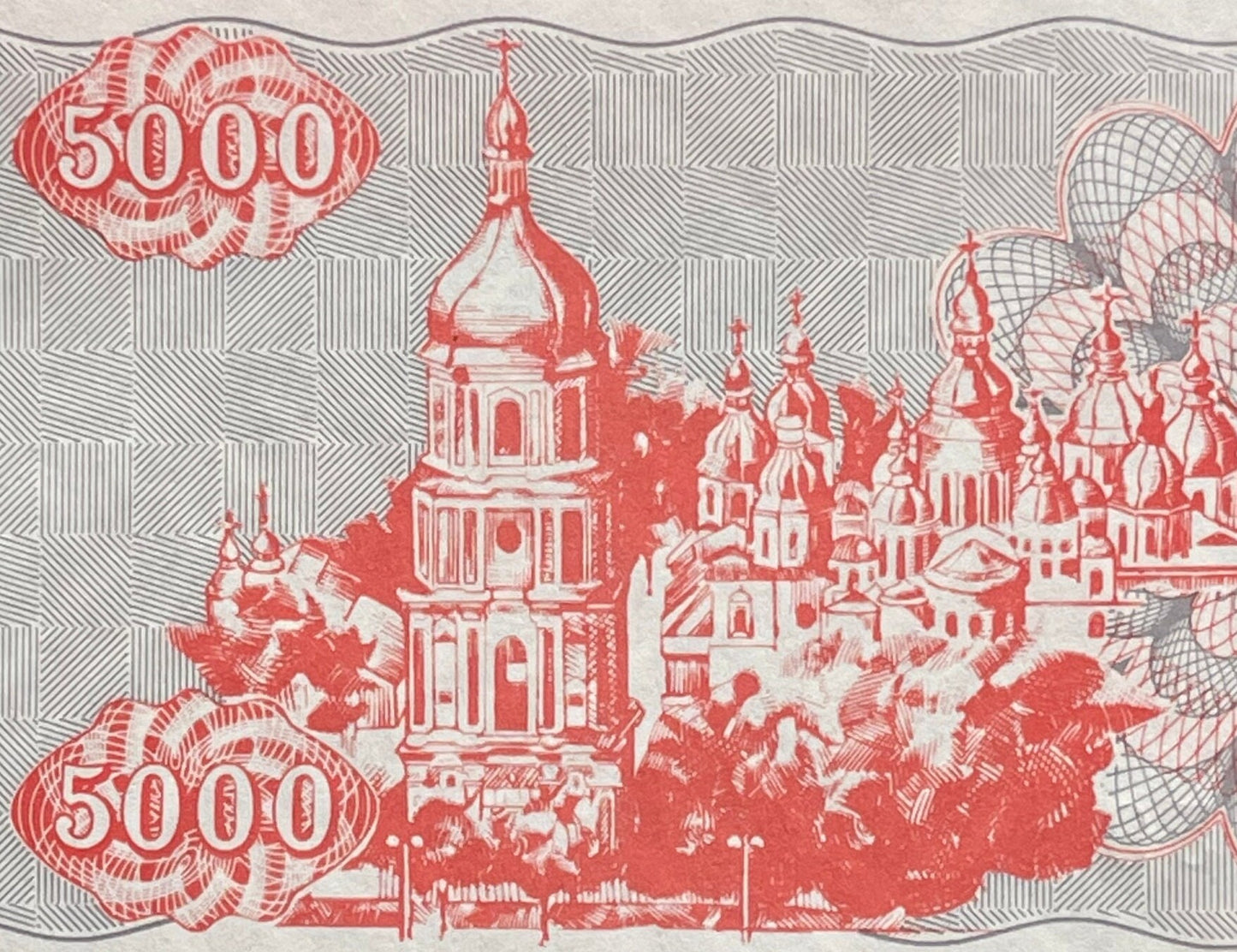
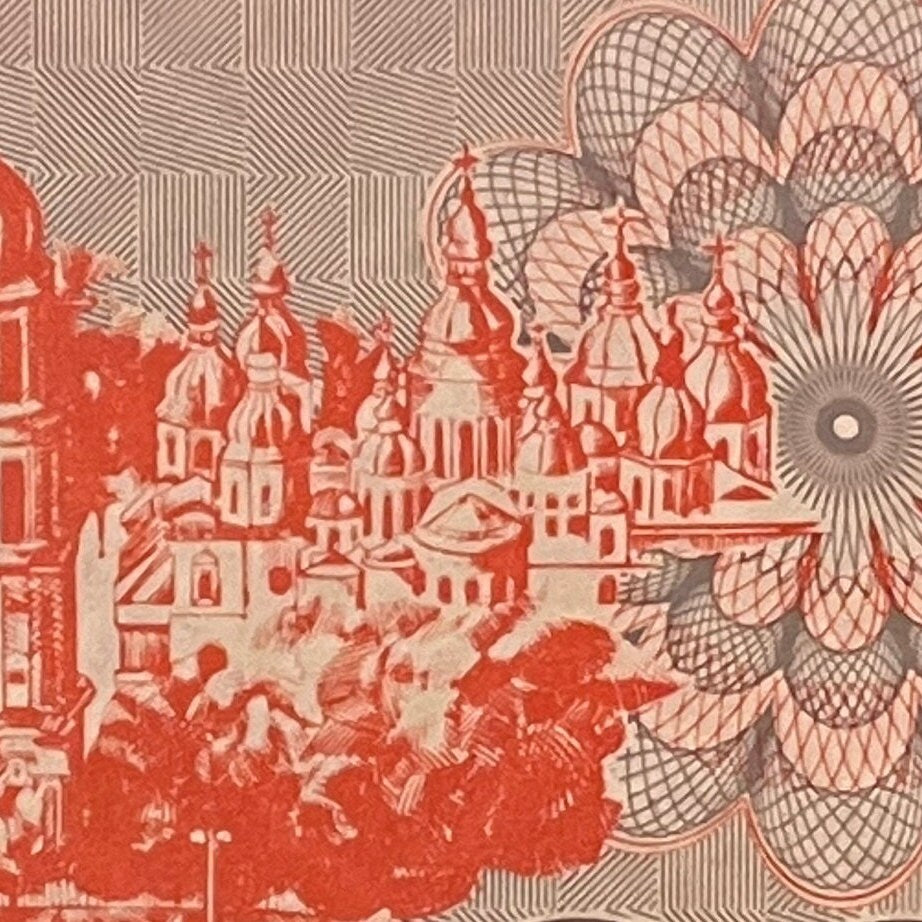
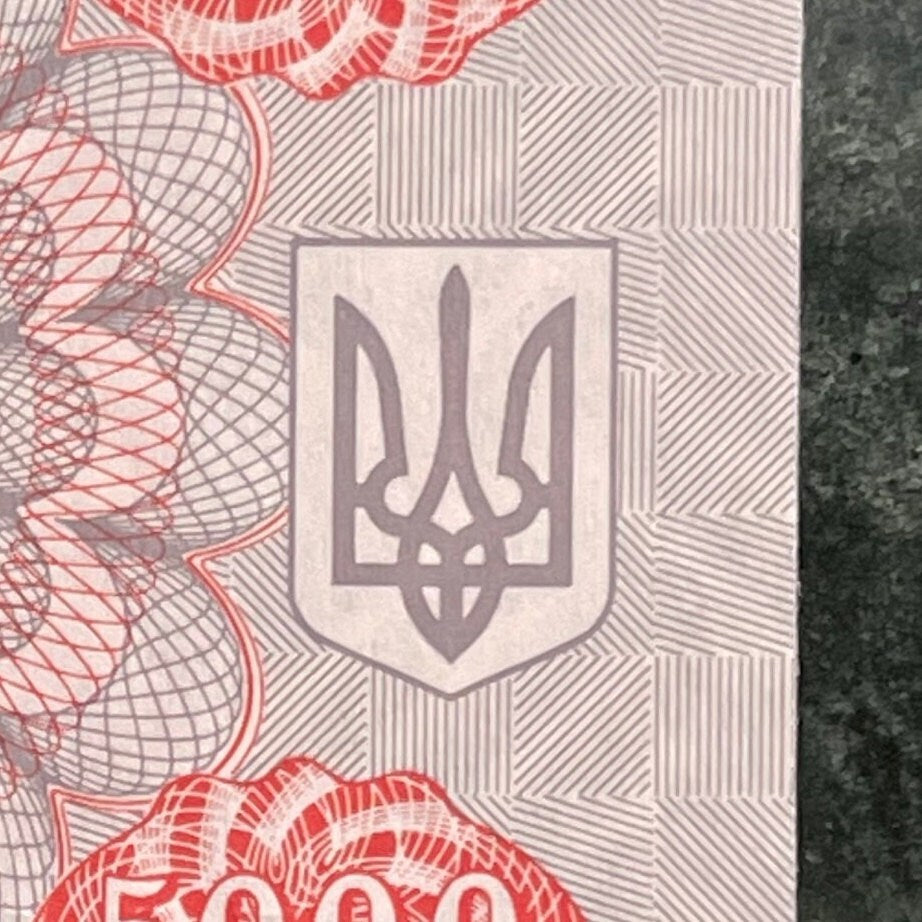
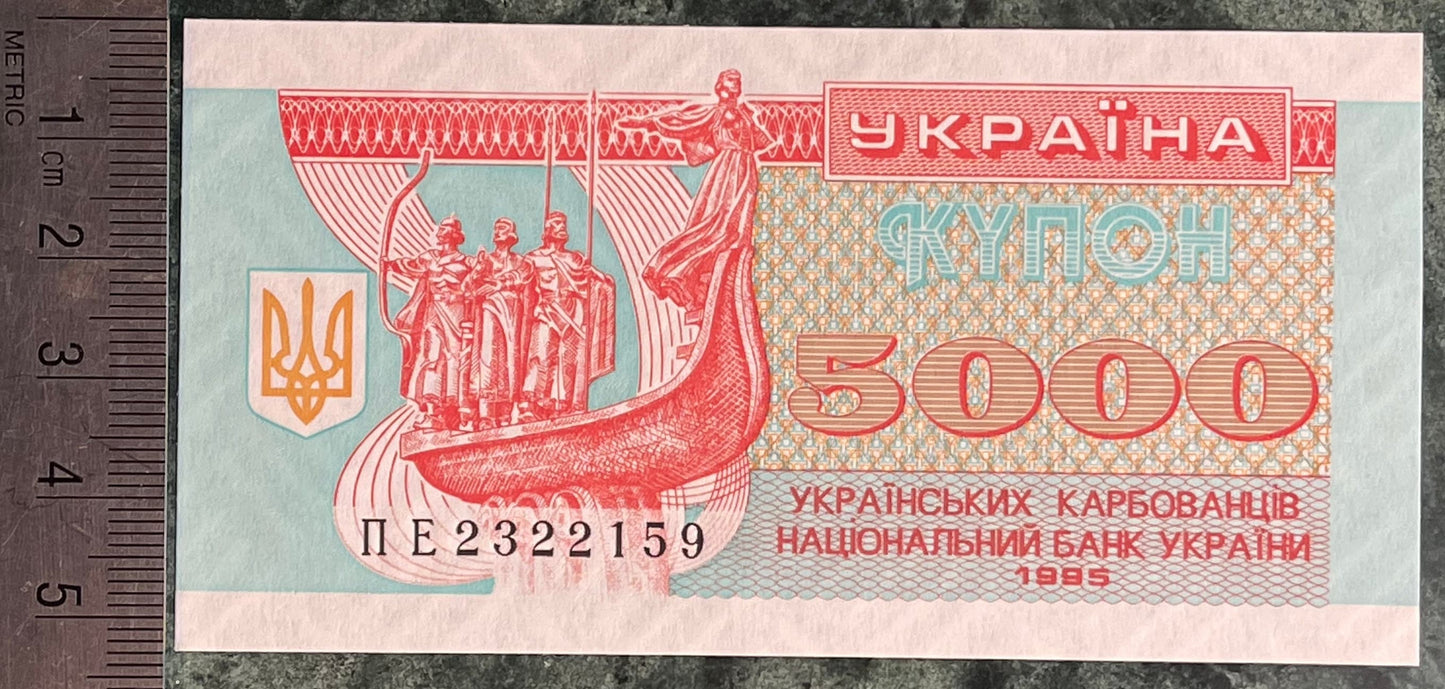
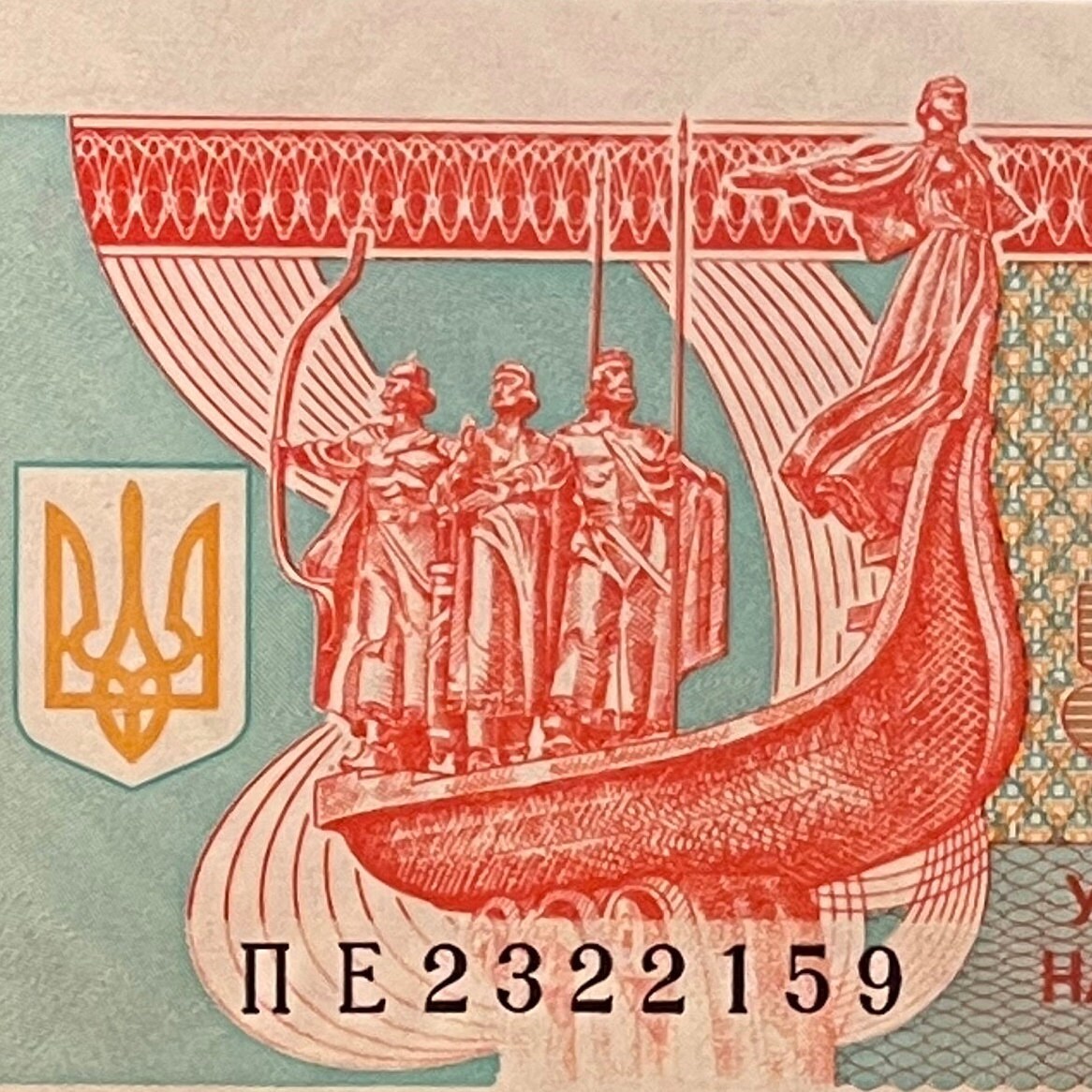
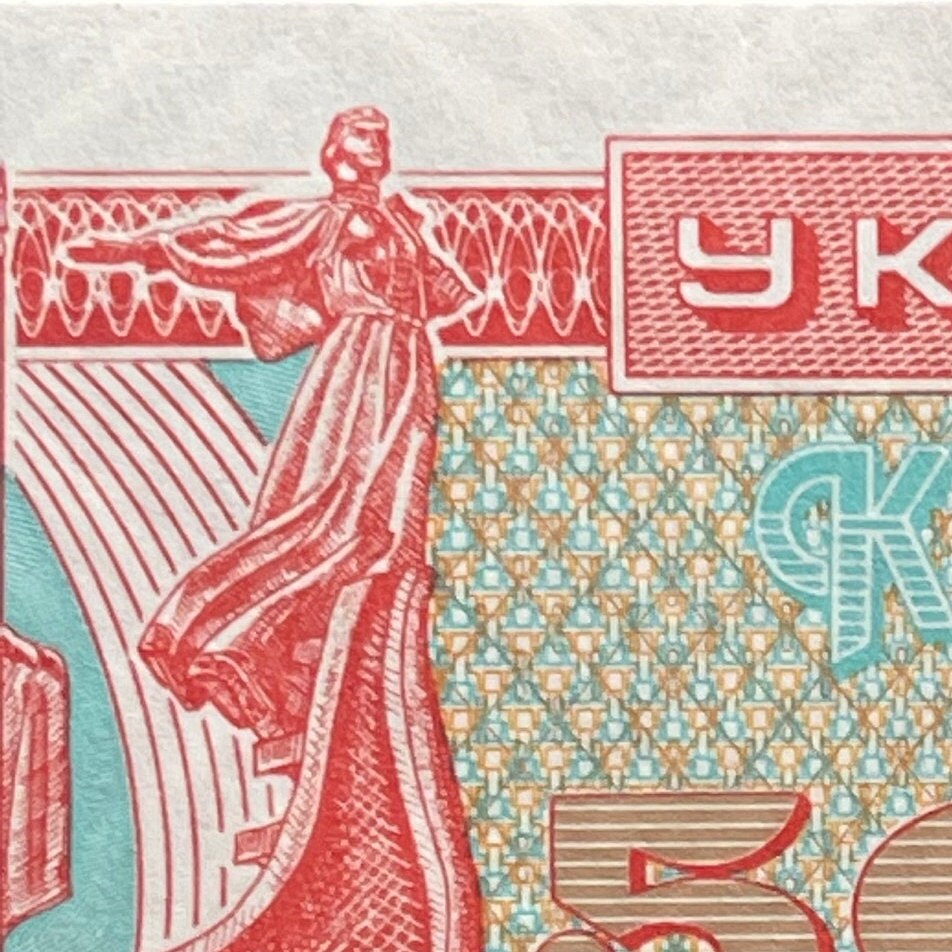
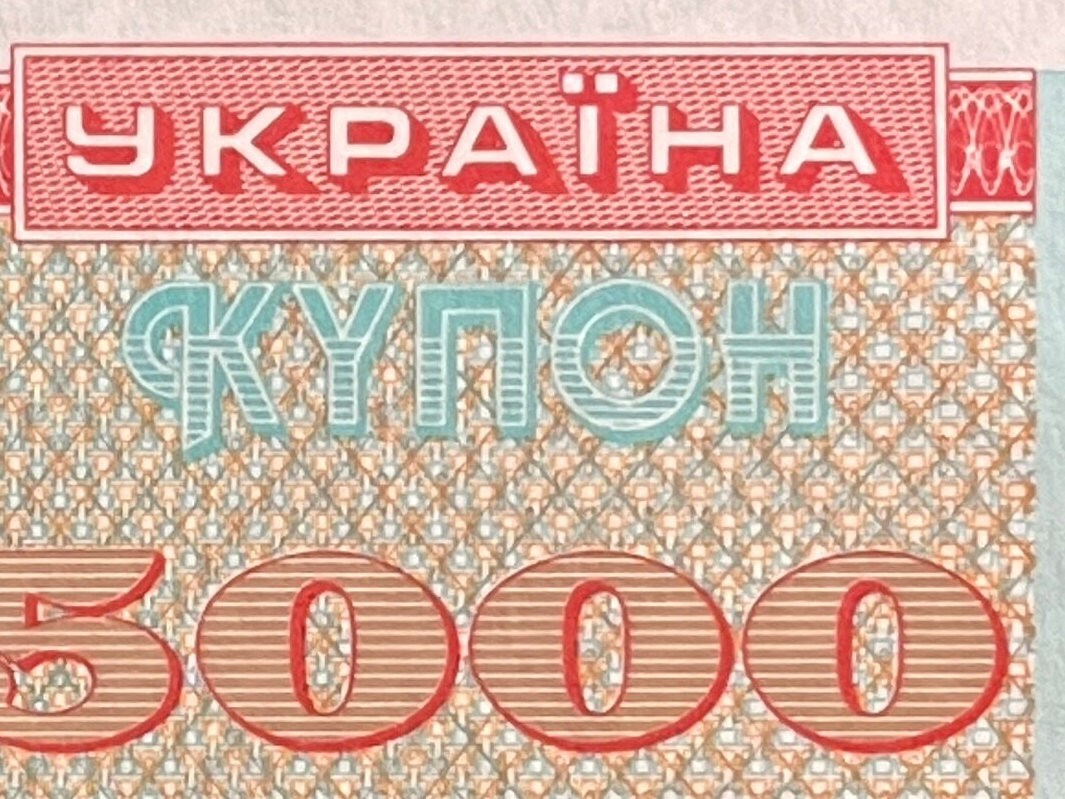
4 stars review from Shannon
As pictured and described. Excellent new condition. Great price, supersonic shipping, secure and professional packaging. Happy return customer -- five-star seller! 👍









